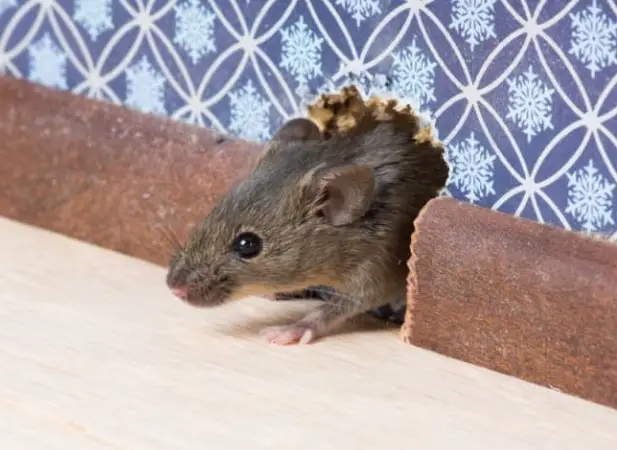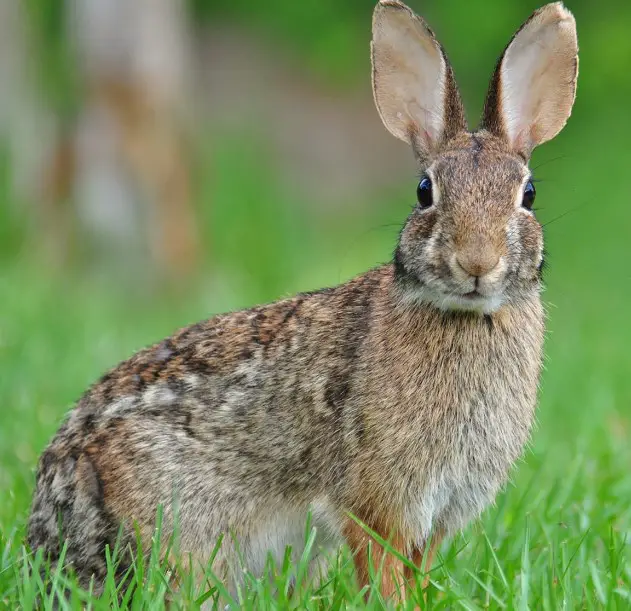Rodents and lagomorphs are two distinct orders within the class Mammalia, often mistaken for one another due to their similar physical appearances and overlapping habitats. These small to medium-sized mammals play crucial roles in their ecosystems, serving as prey for numerous predators and acting as vital components in the environmental balance. Despite their common features, such as long incisors and a penchant for gnawing, significant differences set them apart.
The primary distinction between rodents and lagomorphs lies in their dental anatomy, digestive systems, and reproductive strategies. Rodents possess a single pair of continuously growing incisors in each jaw, while lagomorphs have two pairs of incisors in the upper jaw. Additionally, lagomorphs exhibit unique digestive processes, including cecotrophy, and differ in their breeding habits and offspring care.
Focusing on their ecological roles and interactions with humans adds another layer of interest. Rodents and lagomorphs are not just subjects of biological curiosity but are also significant to agriculture, conservation efforts, and even as pets. Their differences underscore the diversity of mammalian life and the intricacies of evolutionary adaptations.

Rodents: Overview
Definition and Characteristics
Rodents are a vast order of mammals known as Rodentia. They are primarily characterized by a single pair of incisors in each jaw that continuously grow throughout their lives. This unique dental feature requires them to gnaw on various materials to prevent the teeth from overgrowing. Rodents are known for their adaptable nature, allowing them to survive in diverse habitats.
Common Species
This group includes well-known species such as rats, mice, squirrels, and beavers. Each species has adapted uniquely to their environment, from the aquatic lifestyle of beavers to the arboreal existence of squirrels.
Habitat and Distribution
Rodents are found across the globe, thriving in environments ranging from dense forests and deserts to urban areas. Their adaptability has enabled them to colonize almost every terrestrial habitat on Earth.
Lagomorphs: Overview
Definition and Characteristics
Lagomorphs, grouped under the order Lagomorpha, include rabbits, hares, and pikas. Unlike rodents, lagomorphs have four incisors in the upper jaw, with an additional set behind the primary pair. This dental arrangement, along with a distinctive digestive process called cecotrophy, sets them apart.
Common Species
Familiar lagomorphs include domestic rabbits, wild hares, and the less commonly known pikas. Each species displays unique adaptations, from the burrowing behaviors of rabbits to the high-altitude dwellings of pikas.
Habitat and Distribution
Lagomorphs are also widespread, found in varied environments including meadows, forests, deserts, and tundra. They are, however, more selective in their habitats compared to rodents, with specific requirements for shelter and food sources.
Key Differences
Dental Anatomy
The dental structure is a fundamental difference between rodents and lagomorphs. Rodents have a single pair of growing incisors in each jaw, while lagomorphs boast an additional pair of incisors behind the main ones in the upper jaw.
Digestive System
Lagomorphs practice cecotrophy, consuming cecotropes, soft fecal pellets rich in nutrients, to digest their food fully. This process is not observed in rodents, which have a more straightforward digestive system.
Reproductive Traits
Reproductive strategies also vary, with lagomorphs generally having shorter gestation periods and the ability to produce more offspring per year compared to rodents.
Lifespan and Growth
While both groups can have similar lifespans, some rodent species, like certain mice and rats, tend to have shorter lives due to predation and environmental factors.
Dental Distinctions
Incisor Structure and Growth
Rodents’ incisors are their defining feature, growing continuously to compensate for constant gnawing. Lagomorphs also share this trait but have a double set of upper incisors, adding complexity to their dental care.
Molar Differences
Aside from incisors, the molar structures of rodents and lagomorphs differ, affecting their food processing and dietary preferences.
Digestive Mechanisms
Cecotrophy in Lagomorphs
Cecotrophy involves the reingestion of cecotropes, allowing lagomorphs to extract maximum nutrients from their food. This unique process is critical for their survival in nutrient-scarce environments.
Rodent Digestion
Rodents, lacking cecotrophy, rely on a diet rich in various nutrients to meet their dietary needs. Their digestive systems are adapted to process a wide range of foods, from seeds to meat.

Reproduction and Development
Breeding Patterns
Both rodents and lagomorphs display fascinating breeding patterns, crucial for their survival and population growth. Rodents typically have a high reproductive rate, with some species capable of producing multiple litters per year. This trait is especially pronounced in species like rats and mice, which can become parents at just a few months old. Lagomorphs, including rabbits and hares, are also known for their prolific breeding capabilities. However, they have a slightly different approach, with a focus on producing fewer but larger litters, ensuring the intensive care of their offspring.
Offspring Care
When it comes to offspring care, lagomorphs tend to invest more heavily than rodents. Rabbits, for instance, create elaborate nests to shelter their young, which are born blind and hairless. In contrast, many rodents’ offspring are more developed at birth and require less intensive parental care. This difference reflects the evolutionary adaptations each group has made to survive in their respective environments.
Habitat and Lifestyle
Environmental Adaptations
The ability to adapt to a wide range of environments is a hallmark of both rodents and lagomorphs. Rodents, such as squirrels, have developed various environmental adaptations like the ability to store food for the winter, showcasing their preparedness for different seasons. Similarly, lagomorphs have adapted to their environments in unique ways. Rabbits, for example, can digest a wide variety of plant materials, allowing them to thrive in areas that other animals might find inhospitable.
Social Behavior Differences
Social behavior varies significantly between rodents and lagomorphs. Some rodent species, like prairie dogs, live in complex social structures that help them protect against predators and find food more efficiently. On the other hand, lagomorphs like rabbits can either be solitary or live in small groups, depending on the species and environmental conditions.
Conservation Status
Threats and Challenges
Despite their adaptability, both rodents and lagomorphs face significant threats and challenges. Habitat destruction, climate change, and predation are common threats that impact their populations. Additionally, specific species suffer from human activities, such as urban development and agriculture, which encroach on their natural habitats.
Conservation Efforts
To counter these threats, conservation efforts are in place for both groups. For endangered species like the Amami rabbit (a lagomorph), conservation programs focus on habitat preservation and the control of invasive species. Similarly, conservationists work to protect critical rodent habitats and advocate for sustainable agricultural practices that do not harm local wildlife.
Human Interaction
Domestication and Pets
The domestication of certain rodent and lagomorph species has led to their widespread popularity as pets. Rabbits, guinea pigs, and hamsters are beloved for their friendly nature and ease of care, making them excellent companions. This relationship benefits humans by providing companionship and helping to educate the public about wildlife conservation.
Agricultural Impact
Both rodents and lagomorphs can have a significant agricultural impact. While they play essential roles in ecosystems, such as seed dispersal and soil aeration, they can also pose challenges to agriculture. Crop damage by species like gophers and rabbits can lead to significant economic losses, highlighting the need for effective management strategies that balance agricultural needs with wildlife conservation.
Disease Transmission
One of the more complex aspects of human interaction with rodents and lagomorphs is disease transmission. Some species are known carriers of diseases that can affect humans, such as hantavirus and tularemia. Understanding and managing these risks is crucial for public health and requires ongoing research and education.
Understanding their Roles
Ecological Importance
The ecological importance of rodents and lagomorphs cannot be overstated. As primary consumers, they serve as a vital link in the food chain, supporting the survival of various predators. Additionally, their foraging activities contribute to seed dispersal and the aeration of soil, promoting plant growth and diversity.
Research and Medicine
In the realm of research and medicine, rodents play a critical role. Due to their physiological similarities to humans and their rapid reproductive rates, species like mice and rats have become indispensable in medical research. Studies involving these animals have led to significant advancements in understanding human diseases and developing treatments, underscoring their invaluable contribution to science and medicine.
Frequently Asked Questions
What defines a rodent?
Rodents are characterized by their single pair of incisors in each jaw, which grow continuously and must be kept short by gnawing. This group includes mice, rats, squirrels, and beavers, among others. Their adaptability allows them to inhabit diverse environments across the globe.
How do lagomorphs differ from rodents?
Lagomorphs, which include rabbits, hares, and pikas, have a double set of incisors in the upper jaw and a unique digestive process called cecotrophy, allowing them to re-digest their food. Unlike rodents, their incisors are accompanied by a gap called a diastema, and they tend to have more specialized breeding and offspring care practices.
Can lagomorphs be considered rodents?
No, lagomorphs are not considered rodents. Despite their similarities, lagomorphs and rodents belong to separate mammalian orders due to significant differences in dental anatomy, digestion, and reproduction. This distinction highlights the diversity within the animal kingdom.
Why are rodents and lagomorphs important to ecosystems?
Both rodents and lagomorphs play essential roles in their ecosystems as primary consumers and prey for numerous predators. They contribute to soil aeration through their burrowing activities, seed dispersal, and serve as indicators of ecological health. Their presence or absence can significantly impact local biodiversity.
Conclusion
Understanding the differences between rodents and lagomorphs sheds light on the fascinating diversity of mammalian life. These creatures, often unnoticed or misunderstood, carry out crucial ecological functions that underline the importance of biodiversity and the interconnectedness of life. Recognizing and appreciating their unique characteristics and roles in the environment is vital for conservation efforts and maintaining ecological balance.
Their distinctions go beyond mere physical or behavioral traits; they represent the outcome of millions of years of evolution, adapting to fill specific niches within their habitats. As we continue to explore and learn about the natural world, the study of rodents and lagomorphs remains a testament to the complexity and resilience of life on Earth.
